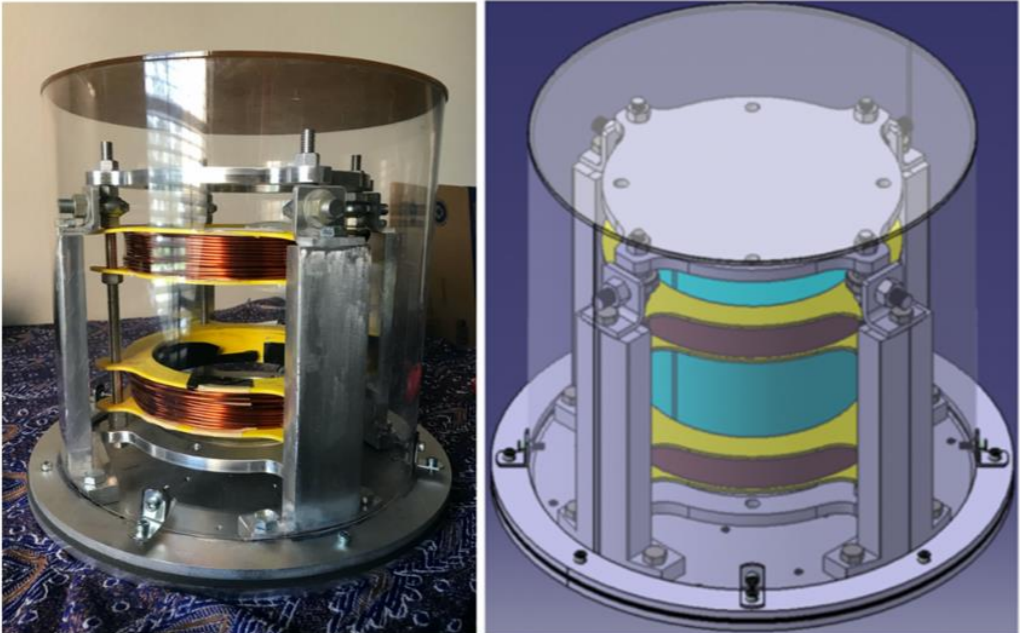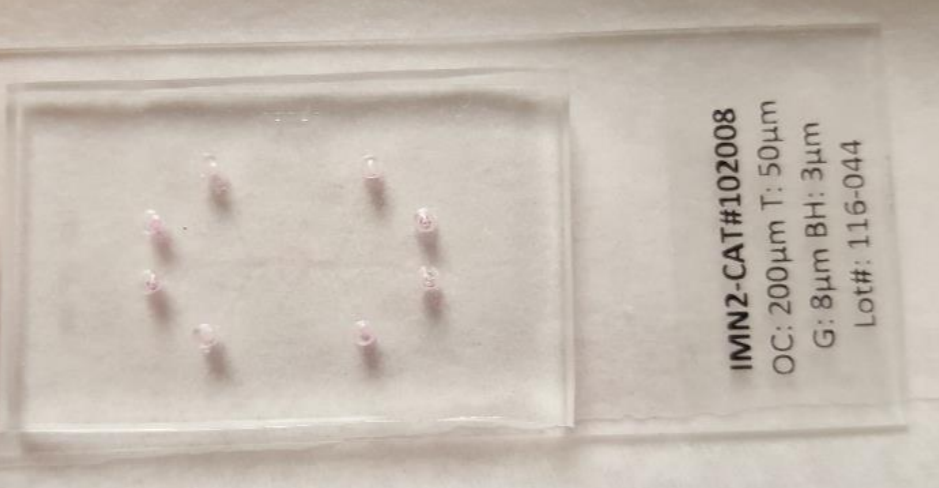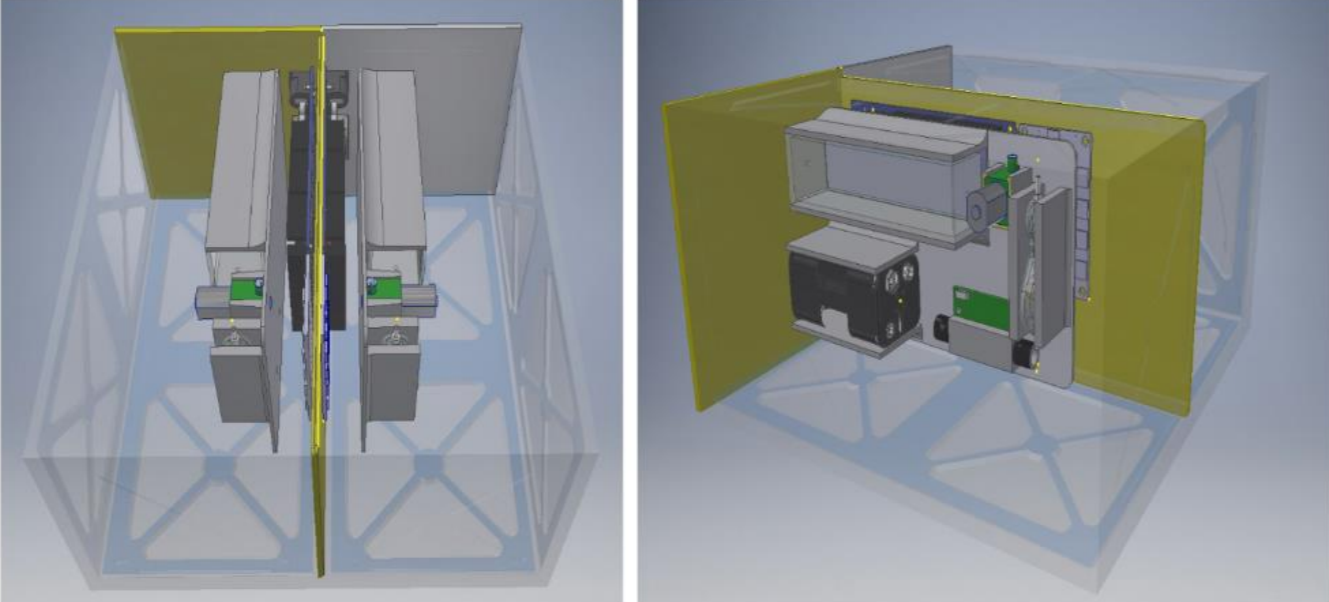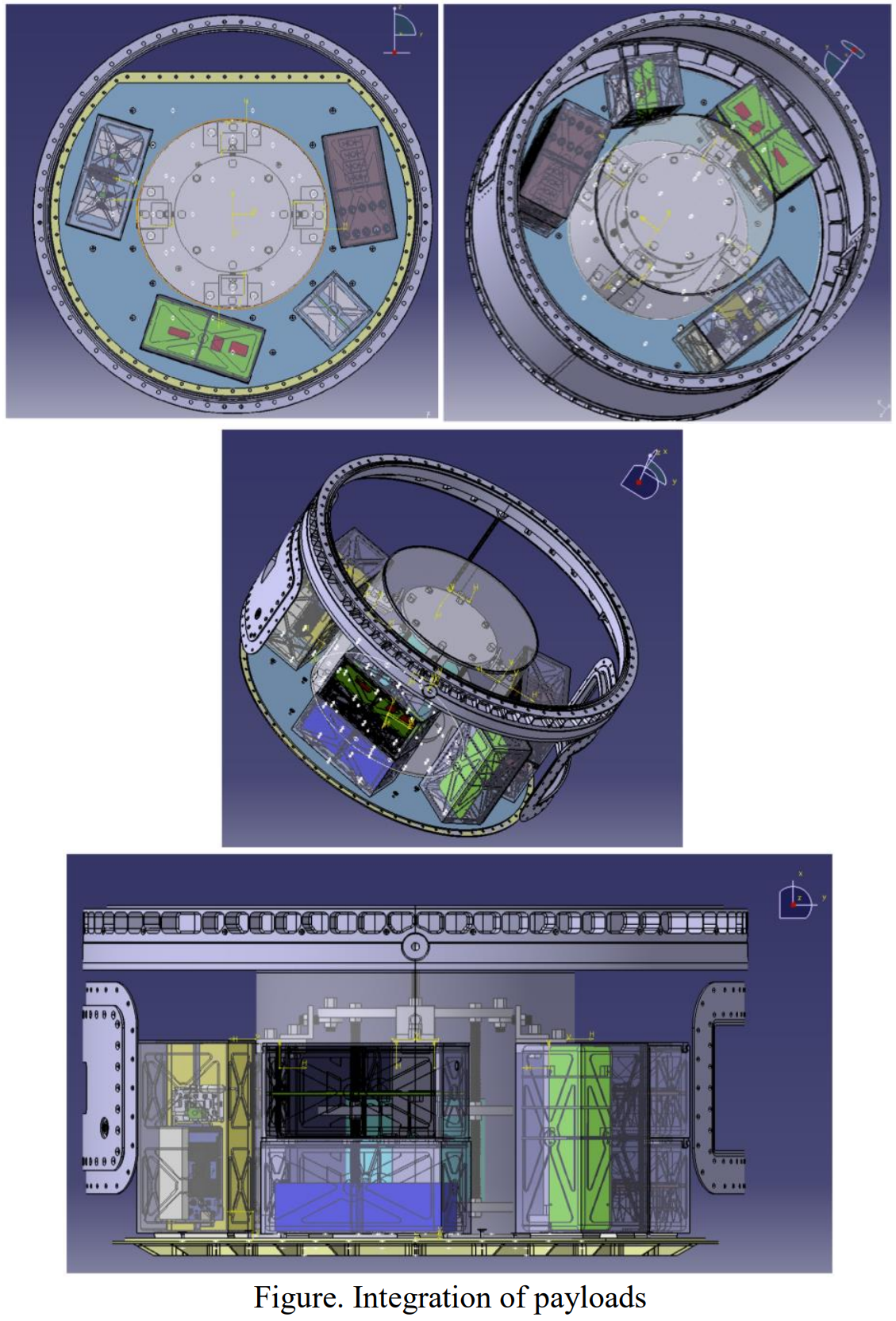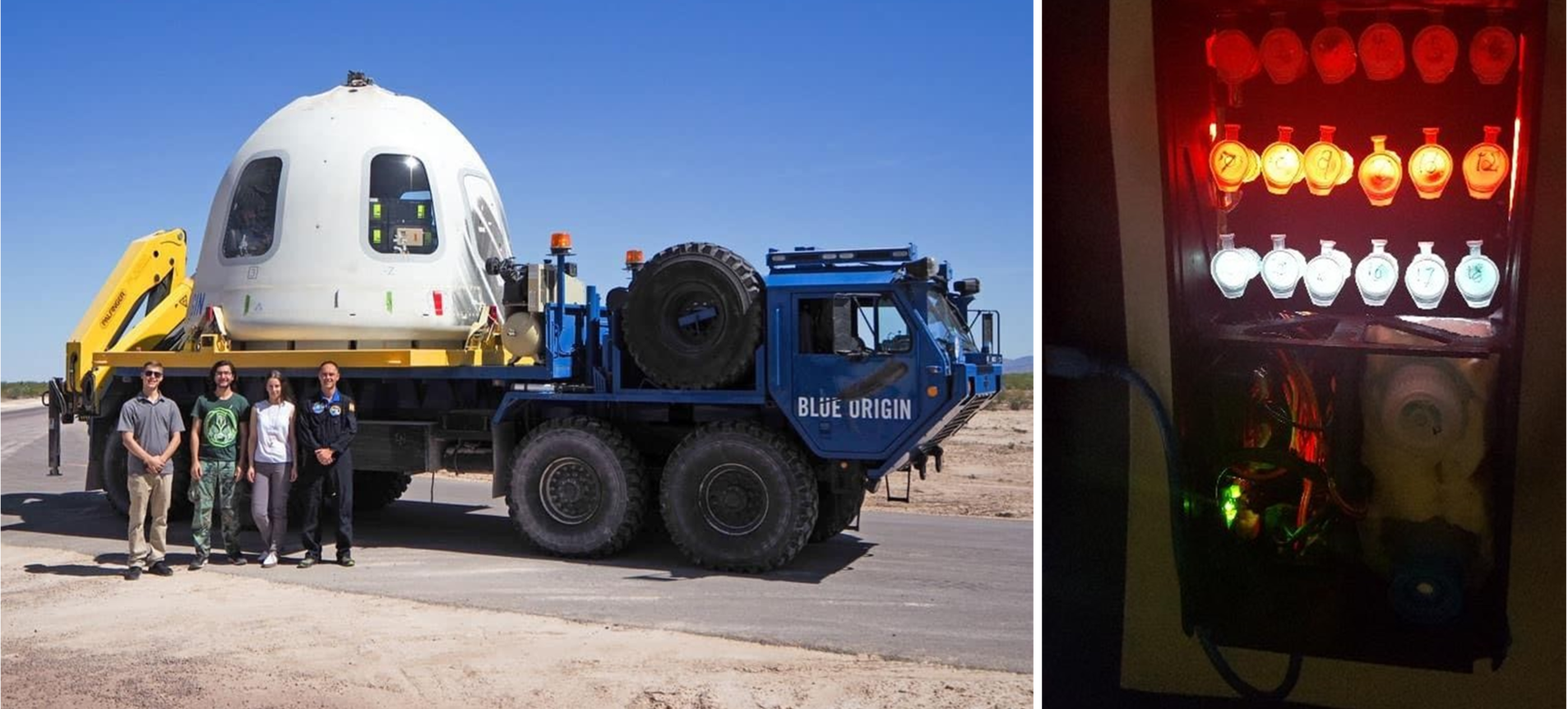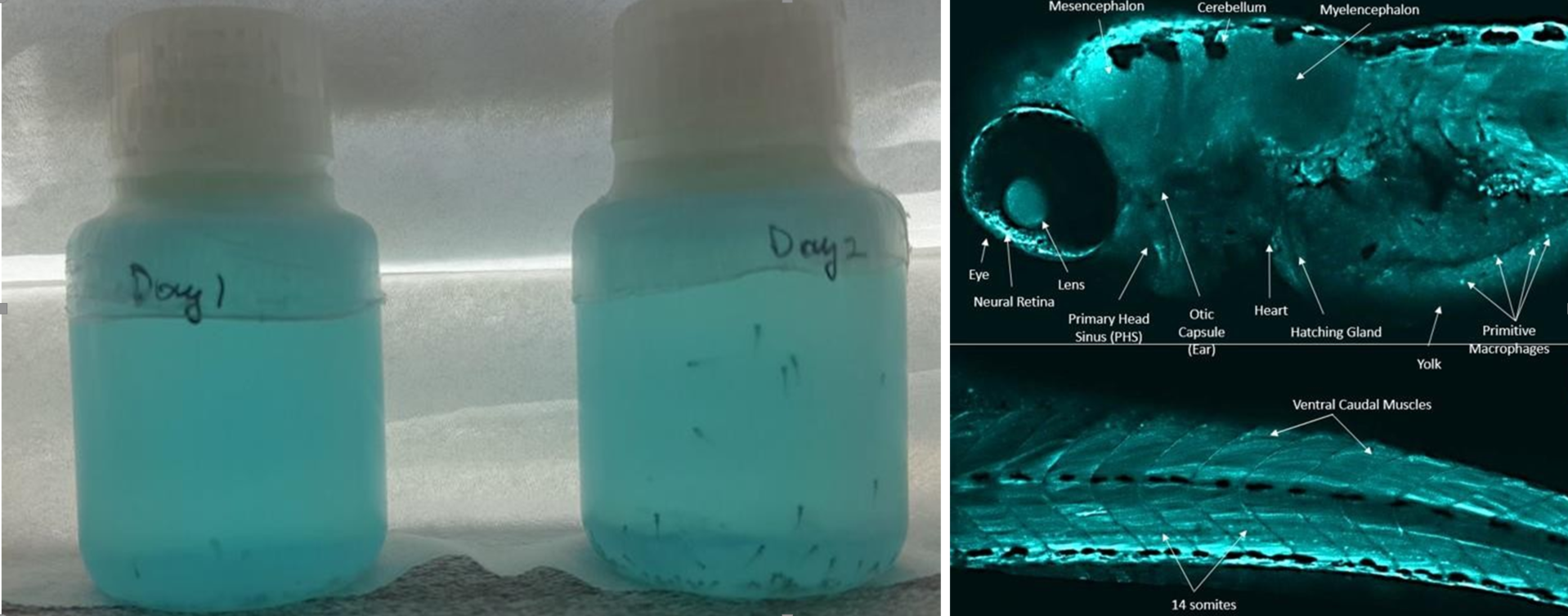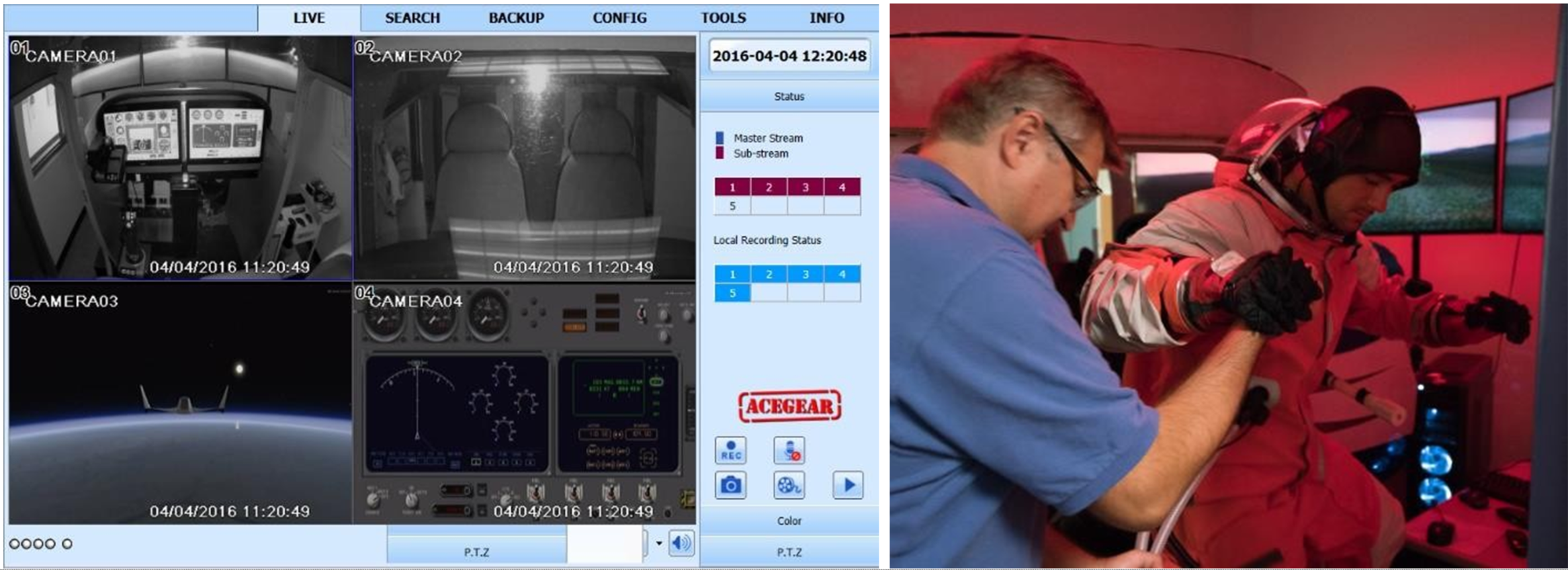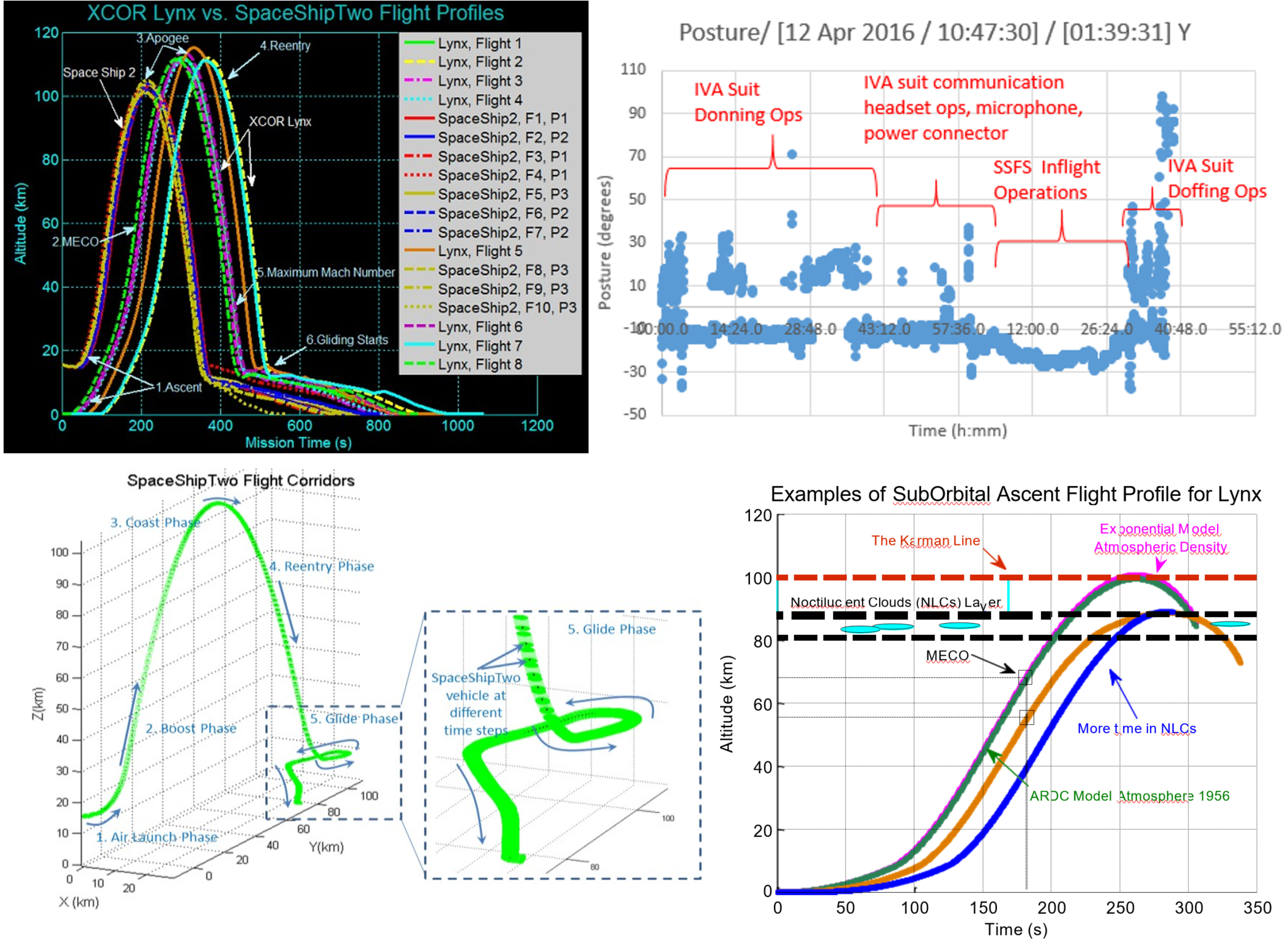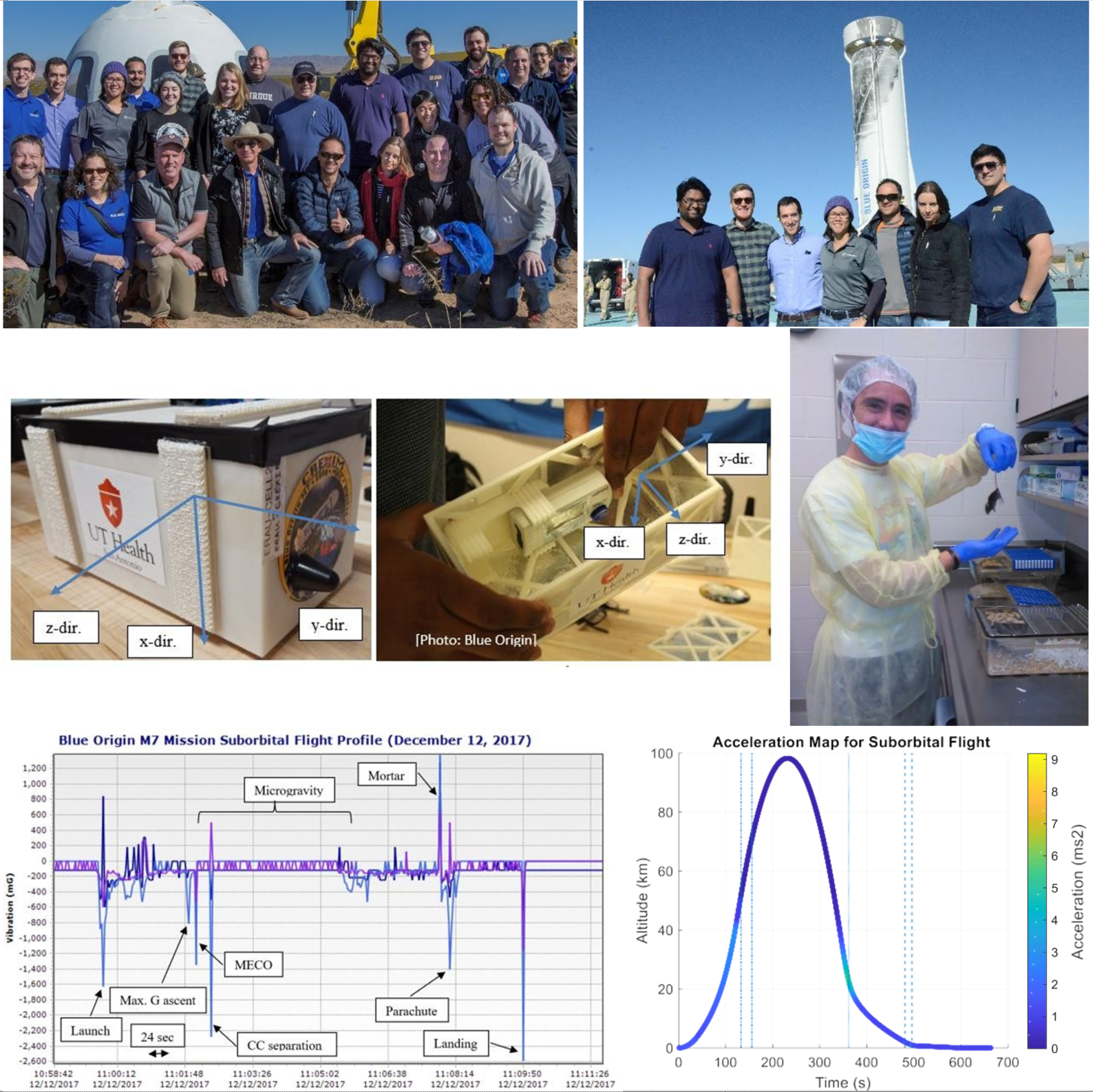11-20 of 34 results
-
Workplace Accident Survey
PI Mark Friend
Random employees of unspecified companies will be interviewed to ID cause(s) of accidents in which they were involved. The goal is to determine if they could have been prevented by adjustments to the overall sysem.
Individuals will be selected based on their availability and asked nine questions and possibly additional questions for clarification, depending on their responses to each. The goal is to determine if adjustments in the employer system could have been made to have prevented hte accident.Categories: Faculty-Staff
-
Implementing Active Learning Techniques in an Undergraduate Aviation Meteorology Course
PI Daniel Halperin
PI Joseph Keebler
CO-I Robert Eicher
CO-I Thomas Guinn
CO-I Kim Chambers
Student feedback from end-of-course evaluations repeatedly indicated a desire to change the format of the course by de-emphasizing the PowerPoint-based lectures. The goal of the present study was to determine whether including a set of new active-learning techniques in an Aviation Weather course would result in better student understanding (as measured by exam scores) and make the course more engaging (as measured by end-of-course evaluations). During 2018-19, three instructors implemented five different active-learning techniques into their classes (i.e., the experimental group), while two instructors continued to use the unrevised course materials (i.e., the control group). The new active-learning techniques, described below, included daily quizzes, polling questions, flipped classroom sessions, in-class activities, and assertion-evidence-based lectures. All sections used the same assignments and exams, allowing for direct assessment of the effectiveness of the active-learning techniques. Analyses of Variance (ANOVA) tables were used to determine the statistical significance of the differences in exam scores. Indirect assessments in the form of end-of-course evaluations were also examined.
Categories: Faculty-Staff
-
Adding Tropical Cyclone Verification Capabilities to the Model Evaluation Tools – Tropical Cyclone (MET-TC) Software
PI Daniel Halperin
Producing reliable tropical cyclone (TC) genesis forecasts is an operational priority. The National Hurricane Center uses several TC genesis guidance products for their Tropical Weather Outlook. Furthermore, global model output is used in many TC genesis guidance products and is considered an important source of deterministic TC genesis forecast guidance. This project creates a standard framework for verifying deterministic and probabilistic TC genesis forecasts using the TC-Gen tool in the Model Evaluation Tools software package.
Accurately predicting tropical cyclone (TC) genesis is an important component of providing the public with the information they need to protect life and property in the event of a landfalling storm. The National Hurricane Center (NHC) issues probabilistic forecasts of TC genesis within two and five days in their Tropical Weather Outlook product. There are several guidance products available to the forecasters, many of which rely at least in part on global forecast models. It is important to understand how accurate these guidance products and the global models are at forecasting TC genesis.
This project seeks to create a standard framework for verifying TC genesis forecasts from various sources. This will allow a straightforward comparison between official forecasts, the experimental guidance products, and global model forecasts. These verification capabilities are developed within the existing Model Evaluation Tools (MET) software package from the National Center for Atmospheric Research (NCAR). As such, the user will have considerable flexibility when setting up a verification task. They will also be provided numerous output statistics for deterministic and probabilistic forecasts.
Categories: Faculty-Staff
-
3D Printing of Continuous Carbon Fiber Composites with Programmable Thermal Behaviors: A Proactive Safety Design for Advanced Thermal Management
PI Yizhou Jiang
CO-I Leitao Chen
CO-I Yanbing Chen
This study aimed to fabricate composite materials, i.e. continuous carbon fibers reinforced thermoset composites (CCFRTC), in a way that makes heat transfer predictable, enabling effective control measures. The ability to control thermal transfer through 3D-printing can lead to significant improvements in preventing thermal-related accidents.
Findings: Final report submitted 9/24. This study demonstrated the adaptability and precision of the team’s 3D printing method but also underscored its potential in advancing the field of thermosetting composite material manufacturing, paving the way for innovative applications, including fire suppression systems.
Categories: Faculty-Staff
-
Developing Aviation ASR and NLP Datasets and Tools
PI Jianhua Liu
CO-I Andrew Schneider
The goal is to create an ATC ASR dataset for open access. We have obtained 300 hours of audio data and processed 30 hours using the bootstrap approach: Using Whisper to provide the initial transcripts, Correcting the transcripts by hired transcriber team, reviewing the corrected transcripts.
Categories: Faculty-Staff
-
Robust Automatic Speech Recognition for Aviation Applications
PI Jianhua Liu
CO-I Andrew Schneider
The goal of this project is to develop speech recognition models that can be used in aviation contexts.
Categories: Faculty-Staff
-
PLD Space Suborbital Microgravity Research
PI Pedro LLanos
This project involves the design, development, integration, testing, validation, and verification of various payloads to be flown aboard PLD Space’s MIURA-1 suborbital rocket.
1. Magnetic Active Propellant Management Device (MAPMD) experiment (student involvement)2. In-vitro experiment comprised of both T-cells and Cancer cells3. Cerebrospinal fluid (CSF) shunt experiment (student involvement)4. Environment characterization of the suborbital vehicle experiment (student involvement)
The first payload is a technology demonstration experiment and will consist of testing and validating a hybrid membrane a viable Magnetic Active Propellant Management Device (MAPMD) proof of concept. This technology is already being tested in a parabolic flight through NASA’s Flight Opportunities Program. This MAPMD is a patented technology developed by ERAU and has demonstrated effective slosh suppression in 1g laboratory setting.
The second experiment's objectives will be to further elucidate the mechanisms altering T‐cell behavior under microgravity (expanding our previous research) and examine the microgravity effect on tumor microenvironment with cancer cells (breast and colon). The third experiment objective is to determine the microgravity effects on intracranial pressure by regulations of a cerebrospinal shunt. This research study is aimed to characterize the effects of fluid shift in a shunt generated by changes in the attitude of the rocket. The fourth experiment will be an avionics box with state‐of‐the‐art sensors to measure the environmental conditions of the rocket and compare these flight parameters with the flight provider.
1. MAPMD will enhance the TRL level achieved with previous payloads launched on NASA’s Zero-G parabolic flights. This research will expand our knowledge of fluid behavior management under various flight stressors while enhancing the aerospace technologies of the suborbital market and future orbital endeavors.
2. The In-vitro experiment will enhance our understanding of the biomechanics of cells using novel state-of-the-art technologies. To our knowledge, this will be the first time that these technologies will fly on a suborbital flight. This research will expand the basic applied research answering fundamental science questions. This project is described in more detail in its own section.
The shunt experiment will improve our knowledge on whether people (with hydrocephalus medical condition) could, one day, fly to space. This research is intended to answer basic applied research questions.
3. The telemetry experiment is another S.T.E.M. payload from which researchers expect to gain valuable data of the flight profile and the conditions inside the rocket that may affect other payloads.
4. The telemetry experiment is another S.T.E.M. payload from which researchers expect to gain valuable data of the flight profile and the conditions inside the rocket that may affect other payloads.
Categories: Faculty-Staff
-
Blue Origin’s Suborbital Research: MESSI/McXIMUS
PI Pedro LLanos
CO-I Sathya Gangadharan
The following studies were conducted with Co-PIs Dr. Sathya Gangadharan (ERAU) and Kristina Andrijauskaite (University of Texas Health Science Center in San Antonio [UTHSCSA]).
MESSI Summary: This project was ERAU's second suborbital payload aboard Blue Origin’s New Shepard launched May 2, 2019. We analyzed the effects of suborbital flight stressors and various light conditions (red, white, no light) on the Arthrospira platensis, commonly known as Spirulina, aboard Blue Origin’s New Shepard launch vehicle. Commercially available cyanobacterium species were cultivated and closely monitored in mother colonies several months before the flight. The aim was to estimate biomass production and growth as a potential dietary alternative for prospective human spaceflight's life support system.
McXIMUS Summary: Zebrafish larvae were exposed to the same physiological stressors they would encounter during suborbital space flight: alterations in light, thermal, and centrifugation conditions, and their behavioral responses were analyzed using the DanioVision (Noldus) behavioral tracking system. Our results showed that zebrafish were most active when kept in a dark environment as measured by swim distance. Also, thermal alterations revealed that zebrafish larvae adapted well to the different temperatures ranging from 25°C to 32°C with the highest levels of locomotor activity observed at 32°C. Finally, the centrifugation tests demonstrated that although zebrafish were exhausted initially, their recovery process was short, lasting for approximately five minutes.
Spirulina Research: The Microgravity Experiment for Spirulina as Superfood In-Vitro (MESSI) was funded by internal funds from ERAU and UTHSCA and ERAU's 2018-2019 Ignite Research Grant. Spirulina samples were flown in a NanoLab with adjacent avionics supporting the light conditions and sensors to monitor the temperature, relative humidity, and accelerations. The various flight parameters measured in the NanoLab were validated with the flight data gathered by Nanoracks. Preliminary results of the genes affected by the temperature and light alterations are presented. Our data indicate that the spirulina samples aboard the rocket had elevated expression of most genes when compared to ground controls, especially genes related to magnesium (mgtE) and nitrate-nitrite (nrtP) transport. Furthermore, we saw the most significant up-regulation (p < 0.01-0.001) of genes from the blue-green spirulina microalgae exposed to the red light. Finally, we used laser-scanning confocal microscopy to provide high-resolution imaging visualizations of the spirulina under different conditions (ground, flight, and light conditions). Results indicate that flight samples exposed to red light had the most profound effect on gene expression and showed an enhanced behavior suggesting that photosynthetic organisms are influenced by light energy. Although it is well-known that spirulina needs light and warmth to optimally grow, our findings indicate that spirulina may be able to survive and grow with no light and at lower temperatures than optimally cultivated conditions, which may reduce hardware and resources dependency for prospective long-duration human spaceflight.
Zebrafish Research: Microgravity characterization eXperiment In Microgravity Universal Spacelab (McXIMUS). It has been proved that the presence of humans in space requires meticulous mission design and a critical understanding of physiological parameters. Space is a hostile environment that has caused numerous health hazards in astronauts, including alterations in the vascularization system and high rates of muscle atrophy. Therefore, understanding the molecular pathways mediating space-induced alterations on human physiology is a necessity in making future missions a success. The goal of this study was to use zebrafish (Danio rerio) embryos as a unique model to study molecular mechanisms of simulated and real microgravity effects on vascularization system and stress response. To simulate microgravity, we exposed zebrafish embryos to a two-dimensional clinorotation device starting 1-day postembryonic fertilization (dpf) and lasting for a maximum of four days. Changes in multiple gene expression were measured by qRT-PCR. Thus, we used the KDRL- BSY zebrafish strain with the blue fluorescently labeled vascular system allowing to image vascularization development using confocal microscopy. Our preliminary results indicate that only a small proportion of genes are affected by clinorotation. Our next goal was to confirm our findings by exposing zebrafish embryos (days 2 and 3 dpf) to microgravity during the suborbital flight aboard Blue Origin’s New Sheppard vehicle in the spring of 2019. Our project entitled Muscular characterization in Microgravity Universal Spacelab (McXIMUS) is a joint research collaboration between the Embry- Riddle Aeronautical University (ERAU) and the University of Texas Health Science Center in San Antonio (UTHSCSA). To ensure a safe environment for zebrafish embryos during the suborbital flight, we designed a NanoLab to guarantee stable thermal conditions inside the payload. Our team has established proper procedures and validation checks to maximize the outcome of this novel scientific experiment. Our data indicate that in contrast to clinorotation, zebrafish embryos exposed to suborbital flight had the up-regulated expression of multiple gene families, with the most profound effect observed in vascular endothelial growth factors and heat shock proteins. To the best of our knowledge, this is the first time when Danio rerio was flown on the suborbital flight mission to assess microgravity-induced alterations on the vascularization system and stress. Here, we present only the preliminary results of our ongoing gene expression analysis, as we are further elucidating the possible mechanisms of action. Findings from this experiment give insights into molecular pathways mediating vascular system and stress response and will assist in mapping out the strategies aimed to minimize the antagonizing effect of space travel in humans.
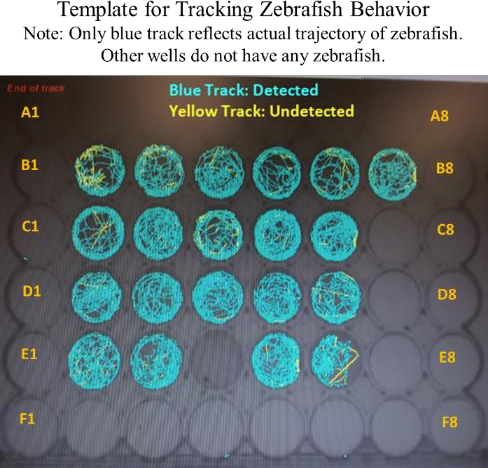
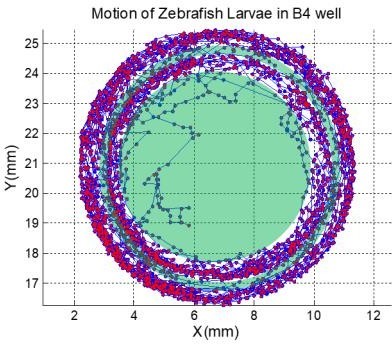
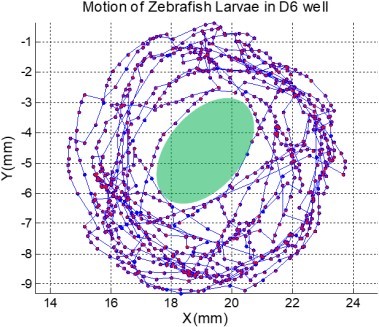
Below: Zebrafish physiology affected by stressors (light, thermal, centrifugation), and the effect of suborbital flight on gene expression.
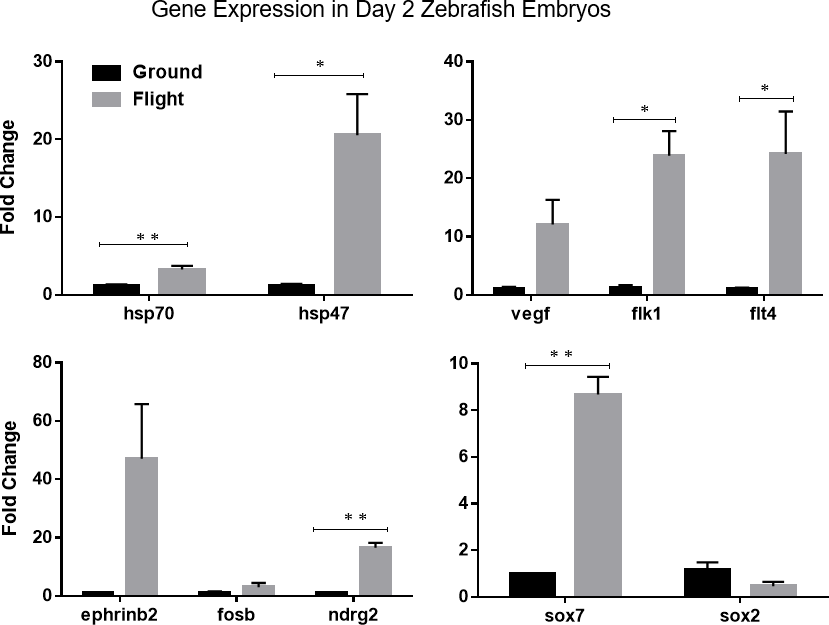
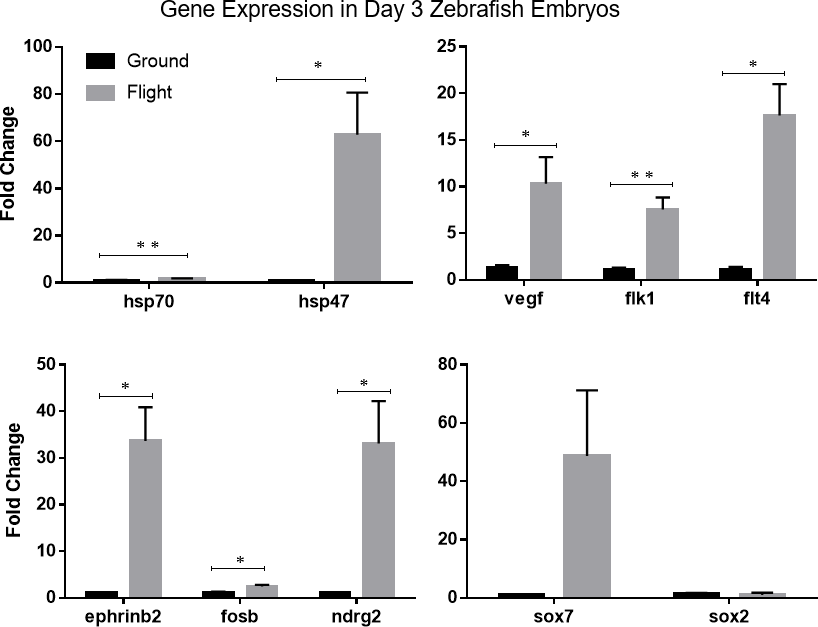
Below left: New Shepard’s Capsule. Below right: NanoLab science experiment with zebrafish embryos and spirulina.
Below left: Flight Zebrafish embryos. Below right: Confocal microscopy of zebrafish.
Below: Confocal microscopy of spirulina flight samples.
Categories: Faculty-Staff
-
Aviation/Aerospace Research: Suborbital Space Flight Simulator
PI Pedro LLanos
CO-I Erik Seedhouse
The Suborbital Space Flight Simulator (SSFS) replicates in-vehicle parameters of a suborbital launch vehicle. These suborbital missions can be monitored from the Mission Control Center (MCC). These flight parameters include the size, general layout, and typical system indicators for a suborbital spaceflight mission, as well as an approximate replication of the visuals that would be seen on a suborbital spaceflight mission. The SSFS can be configured to replicate the mission profile and layout of multiple suborbital launch vehicles. The SSFS records 56 flight data parameters that can be used for studies. The SSFS can potentially be used by multiple organizations, with multiple capabilities.
This research will help students and researchers to use SSFS-generated data to improve their understanding of the fundamentals of suborbital space flight, improve the confidence levels of this research tool for training purposes, and generate large datasets of suborbital missions that can be used for flight operational quality assurance (FOQA). By analyzing these simulated suborbital flights, it will be possible to learn a great deal about the different parameters of various suborbital trajectories and assess pilot performance.
It will also be possible to assess metrics aligned with the flight profile and to determine difficulties the pilot encountered when flying nominal and off-nominal profiles. Some of these difficulties are addressed herein and displayed in a graphical context to assist the reader’s visualization. This research capability enhances our understanding of some key factors, such as winds effects, trajectory, and vehicle parameters variations to streamline the space vehicle operations and enhance science in the upper mesosphere at about 85 km, where different types of science activities can be conducted, such as neutral dynamics, gravity waves, tides, oscillations, and noctilucent clouds imagery and tomography. Understanding these effects is crucial to refine current space operations and establish more robust procedures. These procedures will involve training new space operators to conduct and coordinate space operations in class E above FL600 airspace within the Air Traffic Organization (ATO). Space vehicles such as SpaceShipTwo can spend up to 6 minutes in class E airspace above FL600 after launch. Most of this time is dedicated to science data collection in microgravity and maximizing the science is a key priority. Typical suborbital trajectories cut through the noctilucent cloud layer in the mesosphere region from about 260,000 feet to 280,000 feet during the ascent and descent. This space activity falls within the D-layer of the ionosphere (50-90 km). In each of these segments, the space vehicle spends about 10 seconds in the region of interest, totaling about 20 seconds of total in-situ uninterrupted science in the mesosphere. The SSFS is an important tool to evaluate key functional data parameters that must be considered for suborbital spaceflight participants wearing pressurized suits for intravehicular activity (IVA) from Final Frontier Design’s (FFD) fully pressurized third-generation spacesuit as part of their training. Zephyr BioHarness, BioRadio instrumentation, and Hexoskin smart shirt can be used to collect biometric response data from the participants as they performed their duties inside the SSFS.The SSFS is also equipped with MCC with several consoles, such as Flight (Director), Surgeon, Weather, Integrated communications officer, and Air Traffic Control.
Images below: Mission Control Center and Suborbital Space Flight Simulator
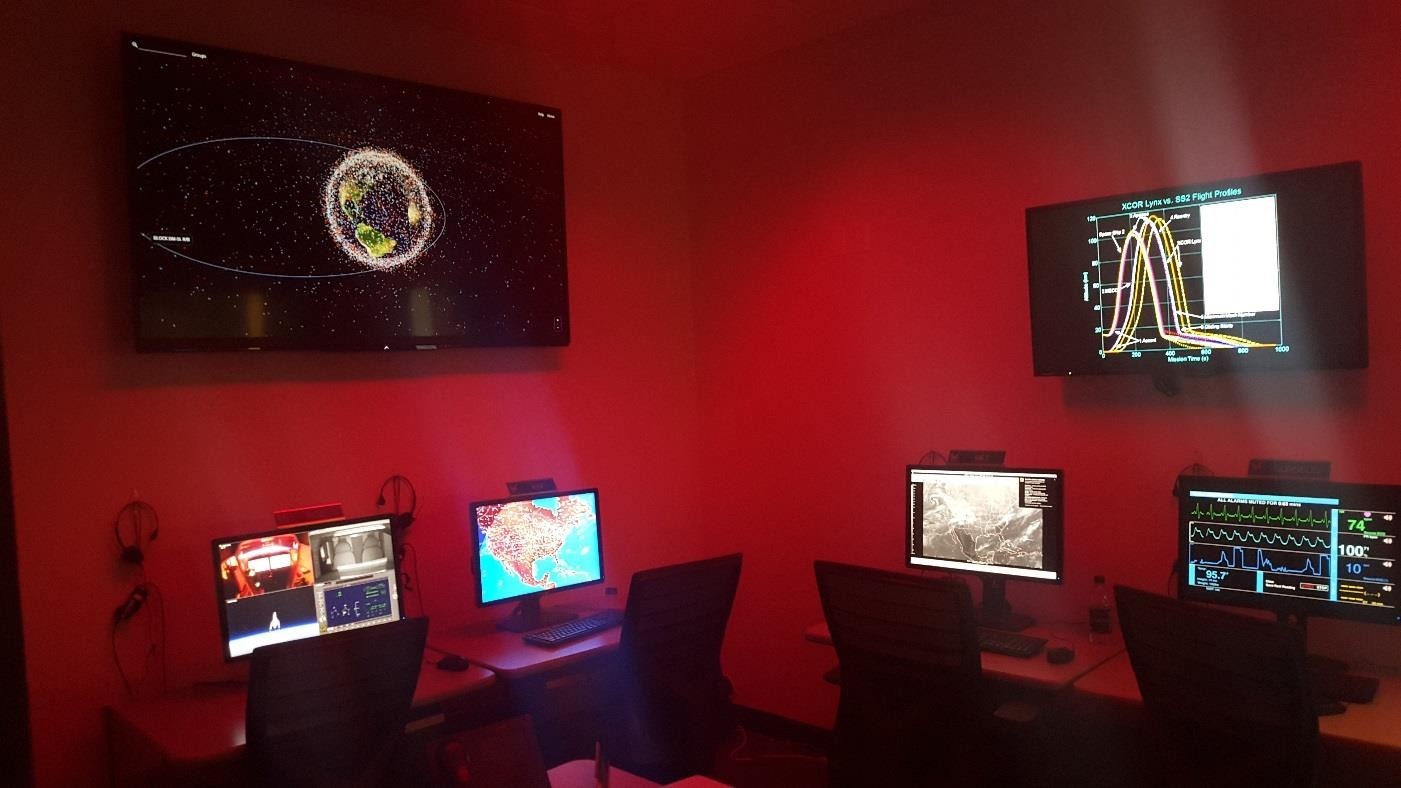
Images below: Examples of suborbital trajectories with several space vehicles. Some of these trajectories can be used to maximize science operations
Categories: Faculty-Staff
-
Blue Origin’s Suborbital Research: CRExIM
PI Pedro LLanos
CO-I Sathya Gangadharan
This research conducted with Co-Investigators Sathya Gangadharan (ERAU) and Kristina Andrijauskaite (MUSC/UTHSCSA), funded by ERAU’s Faculty Research Development Program, was ERAU's first suborbital payload aboard Blue Origin’s New Shepard launched December 12, 2017. The main aim of this research was to investigate the effect of microgravity on T-cells and to understand how this research could be used to develop T-cell-based therapeutics for cancer patients. A second goal was to monitor the environment that T-cells encountered during suborbital flight. The recorded data will be used to better understand the behavior and functionality of the T-cells when exposed to different stressors.
Suborbital space research is emerging as a popular platform to conduct scientific experiments. It has many advantages compared to research on the International Space Station (ISS), such as cost-effectiveness, rapid turnaround, and an opportunity to valid payloads before investing in more costly space laboratory environments. There have been many initiatives by NASA to accelerate this research, such as the release of the Space Biology Plan for 2016-2025, aimed to investigate the biological effects of long-term exposure to the space environment. Therefore, our scientific findings will build upon current research to expand the knowledge on the microgravity effect on T-cells and will also establish a baseline for us to compare future findings from subsequent suborbital flights aboard various research platforms.
This research project was a joint collaboration between the College of Aviation and the College of Engineering at ERAU and The University of Texas Health Science Center at San Antonio (UTHSCSA) and Medical University of South Carolina (MUSC) who worked on the preparation of the translational science research project aimed at investigating the effect of microgravity on the T-cells of a murine model. Cell Research Experiment In Microgravity (CRExIM) was launched aboard Blue Origin’s New Shepard suborbital vehicle on Tuesday, December 12, 2017, from the West Texas Launch Site in Van Horn, Texas. One of the aims of this science experiment was to assess the effects of microgravity on murine T-cells during suborbital flight. These cells were placed in a NanoLab with a data logger which sensed the acceleration, temperature, and relative humidity during pre-flight, flight, and post-flight operations. Some discrepancies in sensor measurement were noticed and these errors were attributed partly to the difference in sampling rates and partly to the different location of the sensors, which made it difficult to obtain highly accurate measurements of the accelerations and to correlate both sets of data. This research provides setbacks and lessons learned which made our team find new alternatives while meeting all milestones as mandated by NanoRacks and Blue Origin. This research highlights these alternatives which lead to the success of the mission and gives recommendations that will enable customers to alleviate some of these challenges in future flights.
Preliminary results suggest that suborbital space flight modulated the expression of certain subpopulations of T-cells, especially CD4+ and CD8+ cells. Thus, we have also observed the functional differences between the flown T-cells and the ground controls. Our scientific experiments and data analyses were conducted at Dr. Wargovich’s laboratory at UTHSCSA using the flow cytometry core facility. In addition, we have performed a complex cytokine expression analysis using the Invitrogen Mouse Custom ProcartaPlex 5-plex.
Below top: Our team with Blue Origin and NanoRacks teams. Below bottom: Our payload and data collected during the suborbital flight.
Categories: Faculty-Staff
11-20 of 34 results

